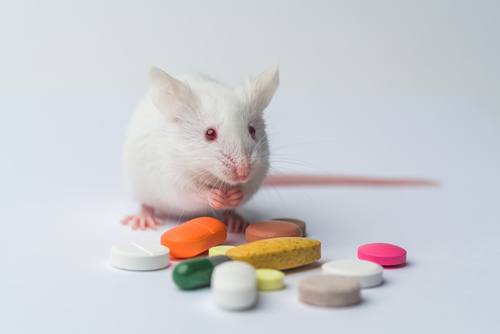Baccatin III May Hold Potential to Treat PF, Mice Study Suggests

A less toxic precursor formulation of the chemotherapeutic agent paclitaxel can reduce lung fibrosis in mice with pulmonary fibrosis, a study shows.
The finding suggests that this compound, named baccatin III or BAC, has the potential to represent a new treatment strategy for people with pulmonary fibrosis.
The study, “Baccatin III ameliorates bleomycin-induced pulmonary fibrosis via suppression of TGF-β1 production and TGF-β1-induced fibroblast differentiation,” was published in the journal International Immunopharmacology.
Paclitaxel itself has shown anti-inflammatory and anti-fibrotic properties, which are promising in the treatment of pulmonary fibrosis. However, its use is commonly associated with fairly severe side effects.
In contrast, its precursor compound, BAC, is much less toxic than paclitaxel, and is known to have some potentially therapeutic effects on the immune system. But whether BAC can prevent fibrosis in the lungs remains unexplored.
To address this, Chinese researchers used bleomycin to induce pulmonary fibrosis in mice and then treated them with BAC at doses of either 5 or 10 mg/kg, administered via one injection into the abdomen.
Three weeks after receiving the BAC injection, all bleomycin-induced fibrotic characteristics “were clearly alleviated,” with the strongest beneficial effect being noted in mice treated with the higher BAC dose. Treated mice were also less likely to die than untreated mice with pulmonary fibrosis.
Further evaluations revealed that BAC treatment reduced the number of inflammatory cells and the amount of detectable damage to the lung. BAC also decreased the levels of genes that encode proteins involved in the fibrotic process, including alfa-SMA, fibronectin, collagen I, collagen III, and TGF-beta 1.
As TGF-beta 1 is an important driver of fibrosis, the team was particularly interested in understanding how BAC could decrease its gene levels.
TGF-beta 1 is predominantly produced by a type of immune cell called a macrophage. So the researchers isolated macrophages from mice and exposed them to BAC to see its impact. They found that BAC treatment could reduce TGF-beta 1 production, with higher doses having a greater inhibitory effect.
Additional experiments revealed that BAC specifically caused this TGF-beta 1 inhibitory effect by blocking a signaling pathway called the AKT/STAT6. This finding demonstrated a mechanism to explain, at least in part, the observed anti-fibrosis effects of BAC.
Further supporting this idea, when the researchers injected BAC-treated mice with extra TGF-beta 1, the therapeutic effects of BAC were significantly lessened.
“Our data support the hypothesis that administration of BAC attenuates [idiopathic pulmonary fibrosis] by suppression of TGF-beta 1 production and function,” researchers said.
Further studies are still needed to determine whether BAC might also be a valuable therapeutic strategy for the treatment of pulmonary fibrosis in humans.







